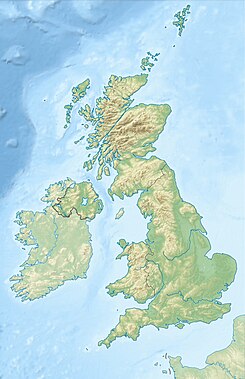Cleveland Hills
| The Cleveland Hills | |
|---|---|
|
IUCN category II (national park)
|
|

The Cleveland Hills viewed from Urra Moor
|
|
|
Location of the Cleveland Hills
|
|
| Location | North Yorkshire, England |
| Nearest city | Middlesbrough, England |
| Coordinates | 54°24′57.84″N 1°12′4.53″W / 54.4160667°N 1.2012583°WCoordinates: 54°24′57.84″N 1°12′4.53″W / 54.4160667°N 1.2012583°W |
| Governing body | North York Moors National Park Authority |
| Website | northyorkmoors.org.uk |
The Cleveland Hills are a range of hills on the north-west edge of the North York Moors in North Yorkshire, England, overlooking Cleveland and Teesside. They lie entirely within the boundaries of the North York Moors National Park. Part of the 110-mile (177 km) long Cleveland Way National Trail runs along the hills, which is a part of Wainwright's Coast to Coast Walk. The hills, which rise abruptly from the flat Tees Valley to the north, include distinctive landmarks such as the cone-shaped peak of Roseberry Topping, near the village of Great Ayton – childhood home of Captain James Cook.
Geological studies of the Cleveland Hills plateau date the rocks back to the Middle Jurassic age, making the range approximately 161–176 million years old, although the North York Moors are formed on rocks from the Lower Jurassic age resulting in shale erosion along the north and west faces of the hills. Roseberry Topping is an outlier which was formed as a result of erosion, separating it from the Cleveland Hills formation, making it a unique natural hill.
There are a number of tumuli and stone circles scattered throughout the Cleveland Hills and North York Moors, dating back to the Bronze Age, as well as many cairns that are of varied ages, some of which are relatively modern. Hundreds of flint arrowheads have been discovered during excavations in the hills and dated to the Mesolithic and Neolithic periods, indication of an active population in prehistoric times across the region.
...
Wikipedia

